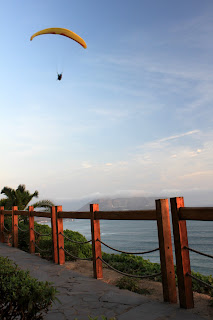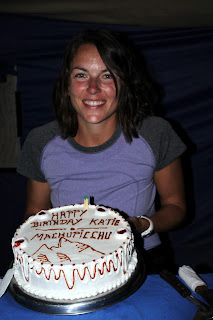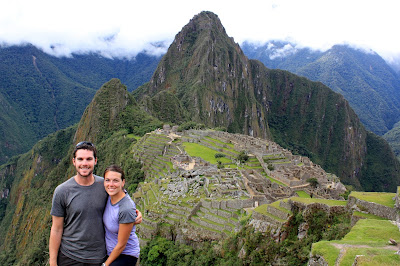After 88 days touring
around Brazil, Argentina, Uruguay, Bolivia and Peru, here are some of our
lasting impressions and memories.
ON SOUTH AMERICA...
South America is the
land of creepy window manikins, Mercedes Benz buses, and walking
breast-feeders.
South America is on a
BYOTP (Bring Your Own Toilet Paper) basis.
South Americans love
mate, coca leaves, soccer, family, Coca-Cola, religion and their plazas. The
order is debatable. South Americans also love music from the motion picture
Rocky. We’ve lost count how many times we’ve heard “Eye of the Tiger”.
We’ve seen various
creative forms of barbed wire.
Most of the souvenirs here are fakes produced in mass quantities. "Do you want to buy my alpaca sweater? It's one of a kind that I hand knitted". Okay lady, but I've seen 500 exact replicas of your hand-knitted alpaca sweater across 3 different countries.
People can’t add. In stores, the workers have to get a calculator out to add up 22.00 + 4.50.
They don't refrigerate milk, eggs, meat, chicken or butter. Somehow it works.
People can’t add. In stores, the workers have to get a calculator out to add up 22.00 + 4.50.
They don't refrigerate milk, eggs, meat, chicken or butter. Somehow it works.
No matter where you
are, or how small of a town you’re in, everyone knows California.
Just about everybody here could use a good pedicure.
Just about everybody here could use a good pedicure.
Vehicle smog emissions are shocking, but South Americans use compact fluorescent light bulbs everywhere…including in the most inappropriate places like century-old church chandeliers.
The hit song of the
summer has been “Au Si Te Pego” by Michel Telo. Even though it’s a Brazilian
song written in Portuguese, it has completely infiltrated all of South America.
It’s hard to go a day without hearing it on the radio, being sung, or as a
ringtone.
Pizza and sandwich
shops consistently list “Americano” as a flavor. Every time, the “Americano”
would have anything but typical American ingredients. When’s the last time you
had a pizza with ham, green olives, eggs and spam?
South America is
dusty, broken and a little ghetto. Even the Eternal Flame at the Maldivas monument in Buenos
Aires had stopped working. Even though it is rough around the edges, the
South Americans own it and that’s part of the charm. It’s a
passionate and rustic place with pockets of absolute beauty, a rich history and
a cast of characters.
ON OUR STATE OF WELL-BEING...
On a restaurant menu
in Cuzco, we found this quote:
“You got here...all
the way from your beautiful country…wow…it is a huge accomplishment…once in a
lifetime…for some…really!!! Enjoy it to the fullest…and this is just one of the
tasty moments your life will give you…how lucky we are!
We talk about that
all of the time…how lucky we are. We have made it successfully through 3 months
in South America. We are safe and healthy and happy.
We’ve been asked by
people back home, “What’s it like to wake up every day and not have any obligations?”
This question makes our eyes bug out. Steve summed it up best by saying that he
has more obligations now than he ever did back in the US. Yes, it’s wonderful that
we don’t have to go to work and that we’re off playing in these incredible
places. But we also wake up every day needing to find a roof over our heads,
food that won’t make us sick, and transportation to places we know nothing
about. Our days are full of decisions that either lead us to harm or lead us to
safety. It is a big responsibility.
Among the backpacker crowd, there is a funny but clear designation between "traveling" and "vacationing". Before this trip we had never distinguished between the two, but now we are absolutely certain that we are traveling. Vacationers get to stay in nice places and spend money on trendy dinners and bottles of wine. Travelers nit-pick every expense.
Among the backpacker crowd, there is a funny but clear designation between "traveling" and "vacationing". Before this trip we had never distinguished between the two, but now we are absolutely certain that we are traveling. Vacationers get to stay in nice places and spend money on trendy dinners and bottles of wine. Travelers nit-pick every expense.
We are proud to say that so far we've spent the biggest portion of our money on activities. We've worked very hard to pull that off. Here's how it's broken down:
Activities – 38%
Lodging – 25%
Food – 23%
Transportation – 13% (not including flights)
Internet, Toiletries, Souvenirs and Laundry – 3%
Would you believe that we keep running into people that we know? It turns
out that the backpacker circuit is quite small and everyone seems to be moving
in a similar direction. It’s always fun to spot someone on the street after not
seeing them for weeks. It makes us feel connected.
We have spent every waking moment with each other for 88 days straight.
The longest we were apart was for 2 hours in Arequipa when Katie visited the convent and Steve didn’t. We have come to rely on each other more
than ever…it was a lonely 2 hours for both of us.
We never know what day of the week it is.
We never know what day of the week it is.
Given the amount of
carbo-loading we’ve been doing with white bread, you’d think we were prepping
for some major athletic event.
We are bringing the egg-over-easy on everything back with us to America. We are looking forward to eating salads and not having to brush our teeth with bottled water.
We are bringing the egg-over-easy on everything back with us to America. We are looking forward to eating salads and not having to brush our teeth with bottled water.
It is a sad reality, but we have become untrusting of people.
Even when someone walks up to us offering help, we immediately think they’re either
trying to rob us or sell us something. We have had one eye over our shoulders
every day for the past 3 months.
After using up a lot of our lotions, shampoos and toothpastes, our
backpacks are feeling lighter than ever. We could run a 100-meter dash with
them on, if we ever needed to.
We have had the
perfect mix of city and nature…flipping every week or so from one to the other.
We have been to every capital city and bused our way through the countryside of
every country we visited. But even so, there is so much land we still did not
cover. South America is a BIG place!
We really hope that
we don’t forget too much of our Spanish before we make it to Spain. Are we sad to be leaving South America? Not really! We had an absolute blast, but we are too
excited for the next phase of our trip. Until
next time, South America! Hasta Luego!
OUR FAVORITE PICTURES


























































